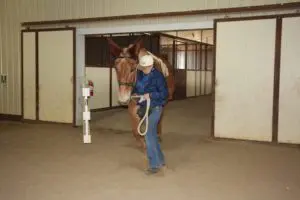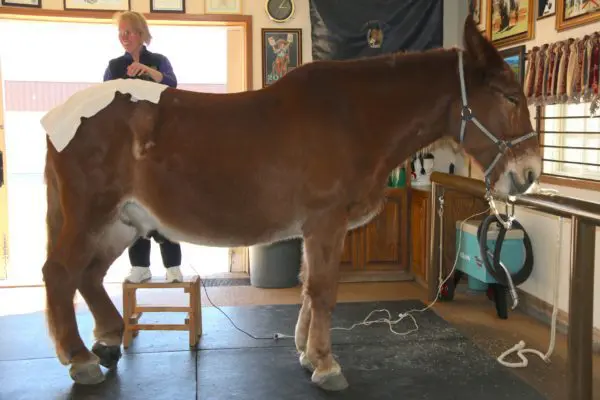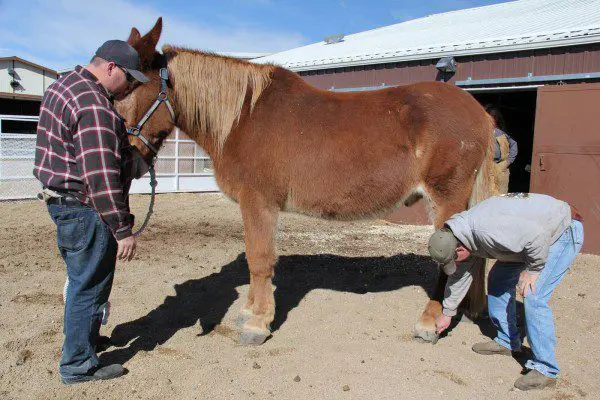What’s New with Roll? Leading in the Hourglass Pattern
Roll is very happy to be back to his core strength, postural leading exercises and today, he got his tail washed after a long and dirty winter. he seemed to enjoy getting his tail cleaned before his exercises.

Roll’s attitude is always good and he lets me know when he doesn’t want to go back to his pen afterward his lessons. He would prefer to stay with me all day long if he could.

He is beginning to really shed out a lot after this warm, dry spring. He really enjoys the brushing with a regular hairbrush to remove the under-hair, then the shedding blade for loose hair and finally the vacuum cleaner to promote good circulation. This regimen really promotes maximum shedding and a healthy summer hair coat.

He led well to the arena and went through the gate just fine although he wasn’t as flexible through his rib cage as I would have liked to see.

He did square up nicely when I asked on the other side of the gate.

His leading exercises went well and although he is still weak behind and wants to unweight one foot or the other when squaring up like he did after coming through the gate. The weight shifting is more general that specific and I think as he is strengthened, his stance will improve.

I also noticed that he really “sunk” behind before going over the ground rails…

…and then was able to maintain his posture over the rails, but “sunk” again on the approach every time.

The rein back was difficult for him, but he did comply with the slightest of cues as well as he was able.

When I ask him to put weight down evenly on the hind feet, he does comply, so this could just be more from habit than from actual pain, although there is clearly atrophy of the bulk muscle and weakness in the core muscles. He should improve with time and exercise.

Roll knows that I have his best interest at heart, so he is always affectionate, loving and willing to do anything and everything that I ask, but then I always keep my expectations for him realistic and doable.















































































































